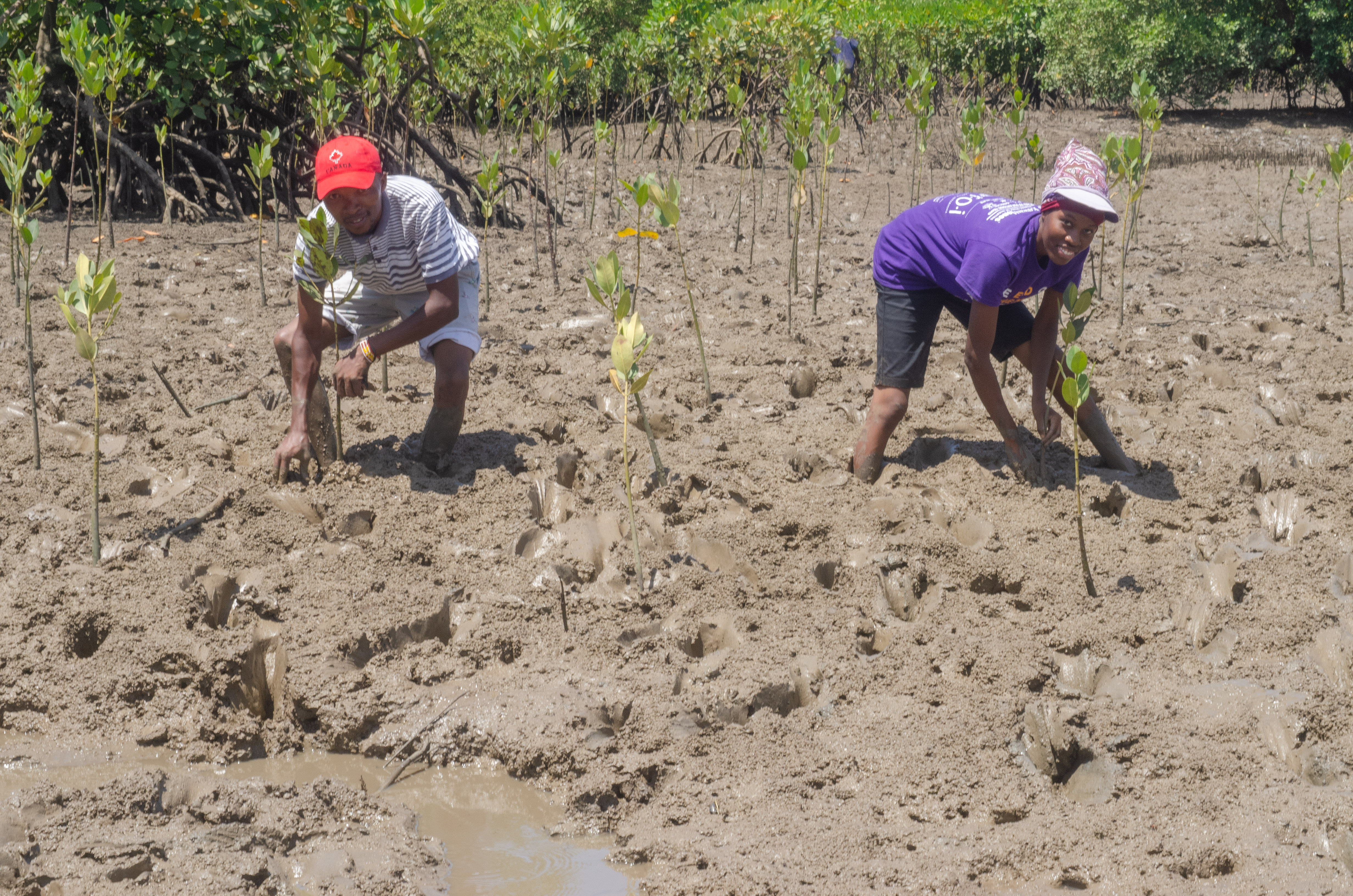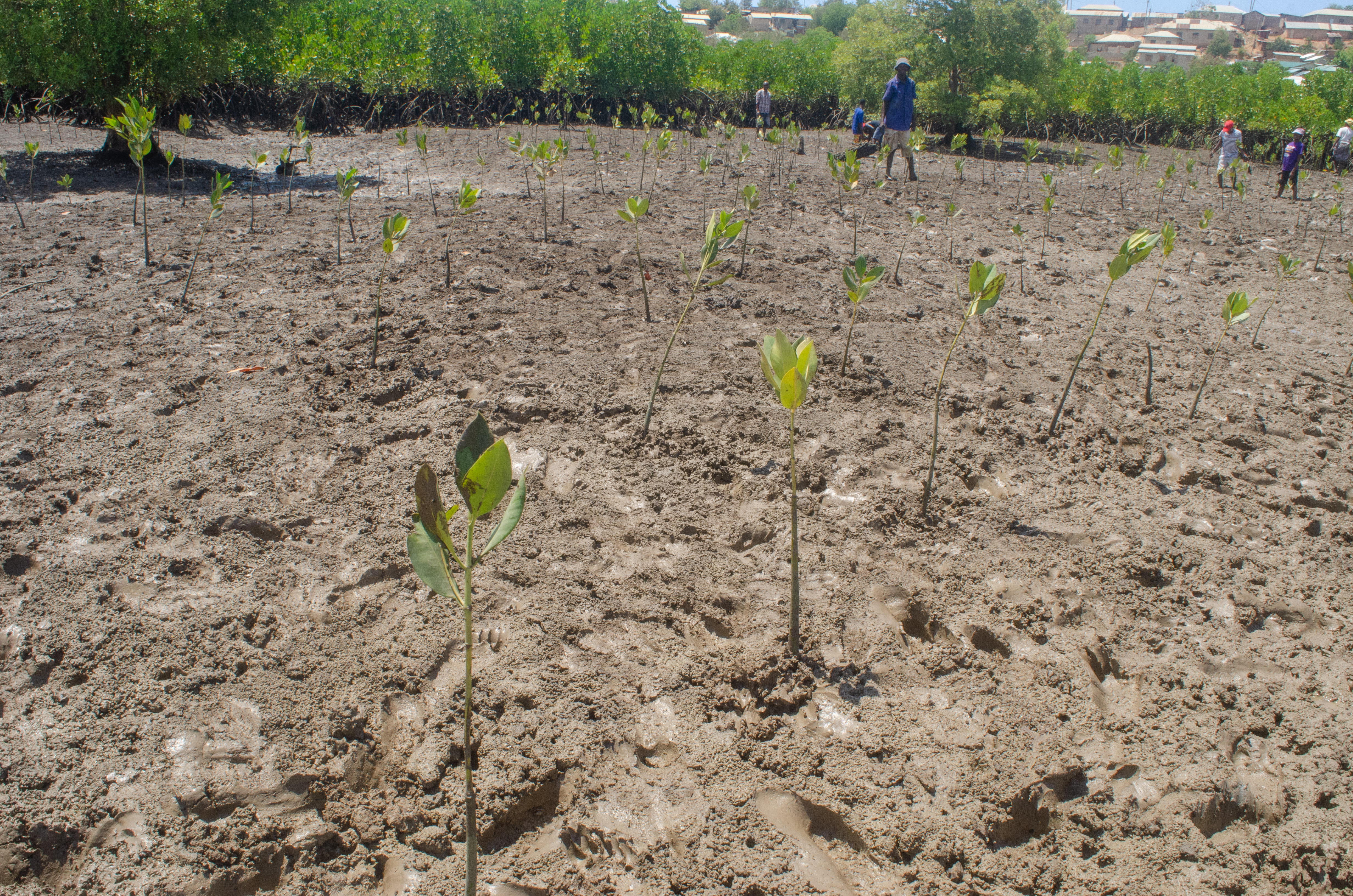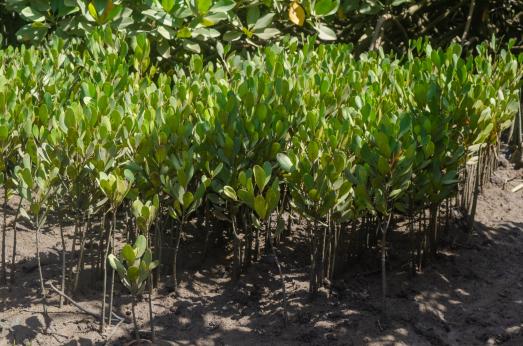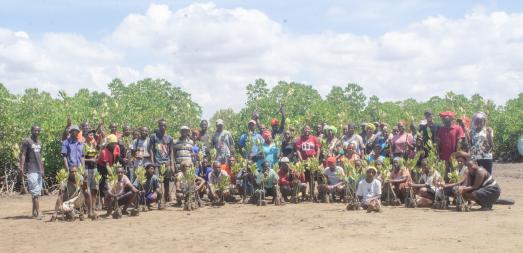
ClimatePartner and Rituals Cosmetics
Why we plant Mangroves in Tudor Creek, Kenya
 On behalf of the personal wellbeing brand Rituals, we are planting 750,000 mangroves in Tudor Creek, Kenya, in 2022. Here’s why:
On behalf of the personal wellbeing brand Rituals, we are planting 750,000 mangroves in Tudor Creek, Kenya, in 2022. Here’s why:
Mangroves are real carbon capture heroes
As mangrove trees grow, they sequester carbon from the atmosphere and store it in their biomass. Furthermore, mangrove roots bind and build soils and thus contribute heavily to carbon uptake by the earth. Over the years, mangrove roots accumulate plenty of sediments and organic matter that flows from the surface into the soil, such as dead leaves and branches, making it a rich soil carbon sink. All this means that mangroves can store up to twice their own biomass in carbon! But that’s not all:
- The mangrove ecosystem provides nursery feeding and breeding habitat for fish, prawns, and crabs. Economically, fishermen are keen protectors of this ecosystem as it has a direct bearing on their fish catch and the local abundance of seafood.
- Mangroves also act as eco-barriers in the coastal front protecting the human population from high waves, storms, and cyclones. It also stabilizes the coastline by reducing erosion caused by currents, waves and tides.
- They offer a habitat for countless animal species. From mammals, insects and birds to various types of crabs, fish, oysters and snails, many different creatures find protection and nourishment in the mangrove forests.
- In addition, the mangrove forests supply honey, fruit, seaweed, salt, leaves and the sea creatures that live there. When managed sustainably, they provide an important livelihood for many coastal inhabitants.

Restoring a precious mangrove habitat: Tudor Creek in Kenya
Tudor Creek in Mombasa, Kenya, was once covered by 1641 hectares of mangroves. Alongside these mangroves were plenty of avifauna, insects and other species complementing a healthy biodiversity corridor in the Junda community. However, due to El Niño rains in the 1990s and continued anthropogenic activities, the mangrove population around Tudor Creek has decreased over time. The depletion of this ecosystem and biodiversity corridor in turn led to the decline of other species.
Tudor creek’s peri-urban ecosystem is threatened not only by the degradation of mangroves but also by the growth of Mombasa town, and climate change: COP-26 cited cities that may be submerged if the sea level rise would increase only by 2% - Mombasa city, a home to over 10 million people, is at a risk. That’s why the youth living along Tudor creek took the initiative decades ago to restore this valuable habitat.

Conserving the ecosystem in the long term requires the support of the local population. Under the leadership of local youngsters working in collaboration with community members, over 500,000 trees have already been planted in an area measuring 102 hectares – this corresponds to around 142 football pitches. Regular training and planting sessions along with beach clean-ups serve to inform and demonstrate how the communities can manage and restore their mangrove forests.

This year, the valuable contribution of an additional 750,000 mangroves will be planted on behalf of Rituals. “Understanding the crucial role that trees play in the future of our planet, we introduced the Buy One Refill, Grow One Tree Program, to trigger proactive changes that support our environment.”, says Niki Schilling, Ritual’s Director of Innovation & Sustainability. Rituals is aiming to grow 5 million trees globally by the end of 2022 and to do this, it has joined forces with ClimatePartner and earthday.org to focus on mangroves in India and Kenya.
In doing so, Rituals is helping us to restore and preserve these important habitats in the long term and, making a valuable contribution to local development, to regenerate regions affected by deforestation.


